Principle Investigator
Dr. Rebecca Bunn, Professor
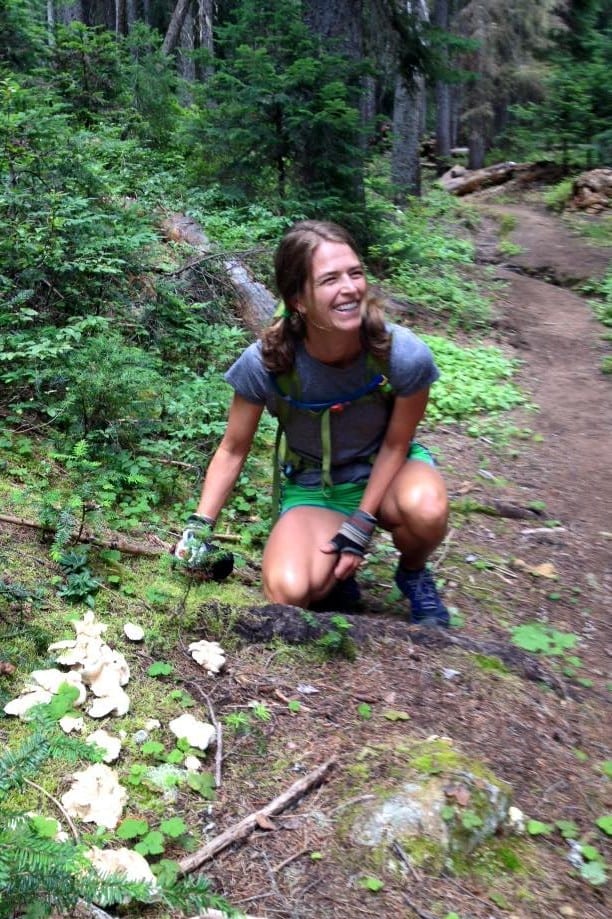
I am interested in plant-soil interactions, particularly within the context of invasion ecology, sustainable agriculture, and restoration. My research focuses on mycorrhiza, an ancient plant-fungal symbiosis in which the plant provides the fungus with carbon and the fungus provides the host plant with a suite of potential benefits, the most common being increased nutrient acquisition.
In addition, I am interested in the application of statistics to ecology questions
Classes I currently teach: ESCI 340 Biostatistical Analysis, ESCI 465 Plant and Soil Interactions, ESCI 503 Multivariate Methods for Environmental Science, ESCI 599 Data Wrangling and Visualization
Current Lab Members
Emily Ralston, MS in progress
Eddie Church, MS in progress
Natalia Debardeleben, BS in progress
Zach Zarling, BS in progress
Sophia Lee, BS in progress
Former Lab Members
Malia Thatcher, BS 2024
Karson Nicpon, BS 2024
Eva Araujo, BS 2024
Max Nathe, BS 2023
Jay Dally, BS 2023
Johnny Billecci, BS 2023
Andy Labay, MS 2023
Justin Mead, BS 2023
Brigid Wills, BS 2022
Liz Zimmerman, BS 2022
Austin Kmetovic, BS 2021
Risa Askerooth, BS 2020
Erika Whitney, MS Fall 2020
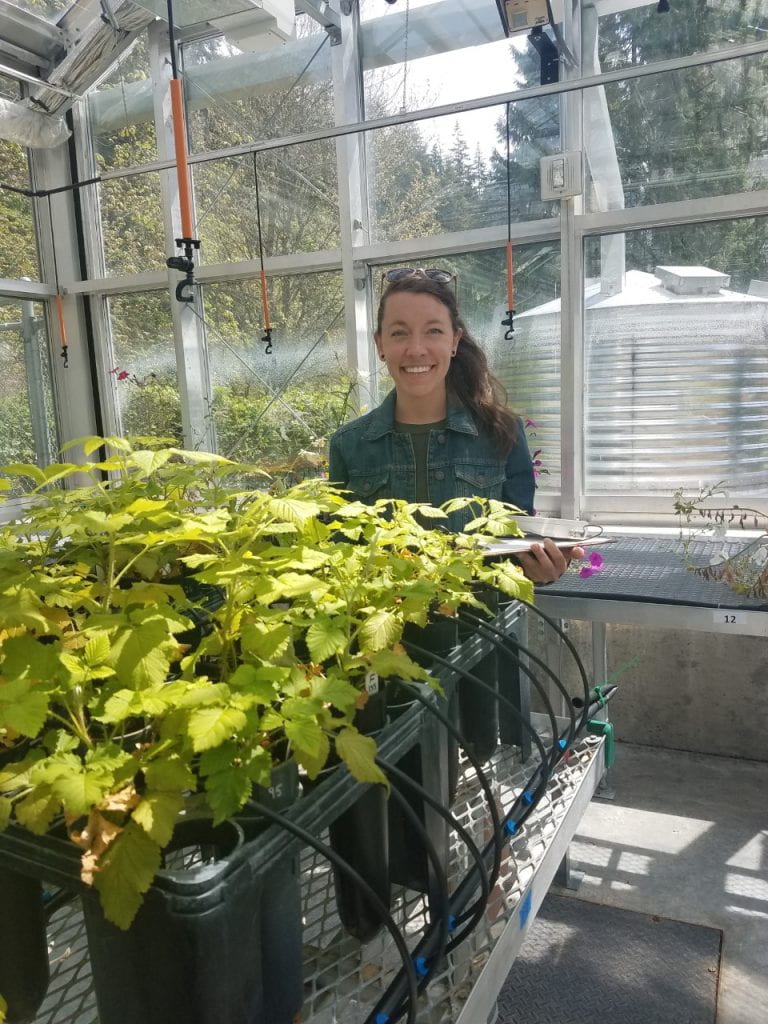
Erika investigated whether local agricultural, local wild, or foreign mycorrhizal fungal communities differ in their effects on raspberry plant growth, and whether mycorrhizal fungal symbioses affect raspberry plant susceptibility to a root pathogen or a parasitic nematode.
- Deans Fund for Sustainability Studies $435
- Graduate Student Research Award $1959
Carly Tryon, BS Spring 2020
Carly majored in Environmental Science with an emphasis in freshwater and terrestrial ecology. She loved working in the lab from September 2018 through May 2020. She assisted with data collection for the knapweed light study and our studies in the role of arbuscular mycorrhizal fungi in the growth and pathogenic resistance of raspberries within Whatcom County. She also became an expert in extracting spores from soil and counting them!

Patrick Norman, BS Spring 2020
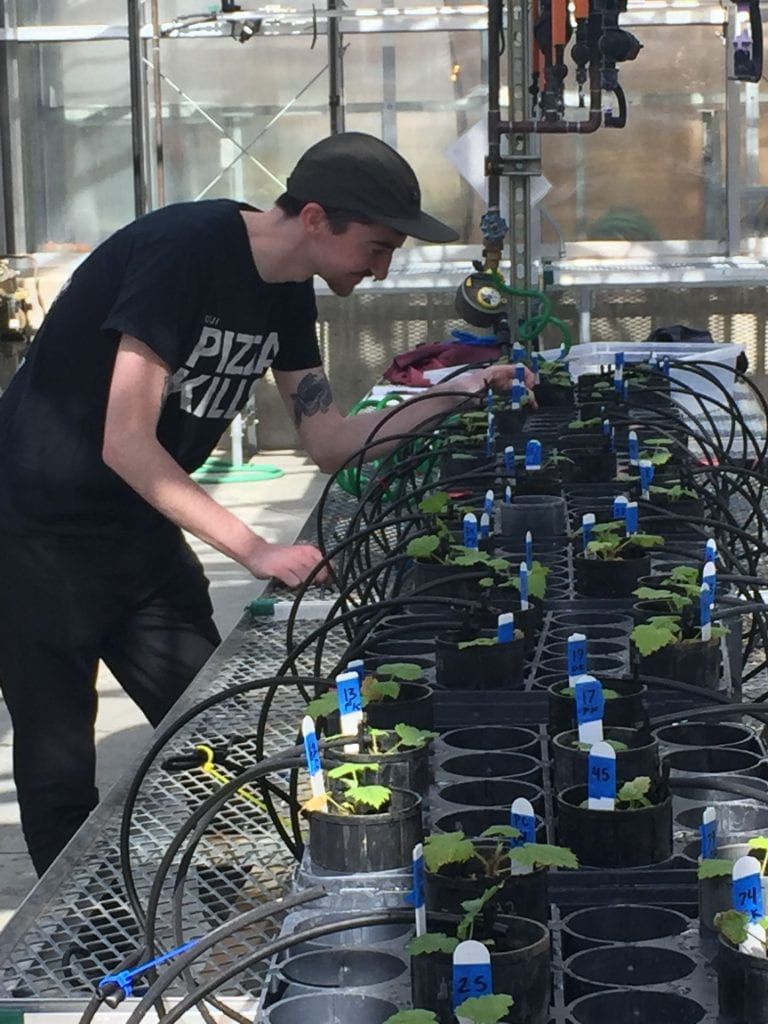
Patrick completed a greenhouse study to determine the effect of arbuscular mycorrhizal fungi on survival and growth rates of raspberry plants exposed to a pathogen, Phytophthora rubi. He grew the raspberry plants under two soil biota treatments and a control treatment, exposed some of them to the pathogen, and monitored growth rates and the success of different treatments in fighting off the pathogen. He found that raspberry plants grown with soil biota from farm soils were able to resist P. rubi infections.
Regina O’Kelley, BS Fall 2017
Roslyn Martin, BS Spring 2018
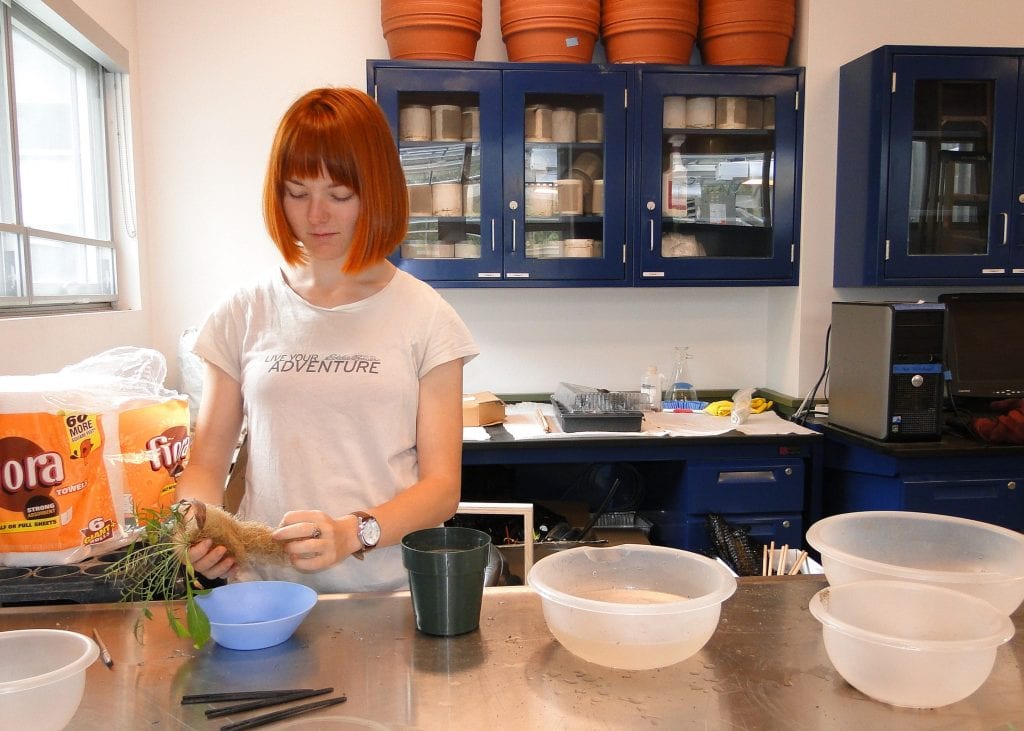
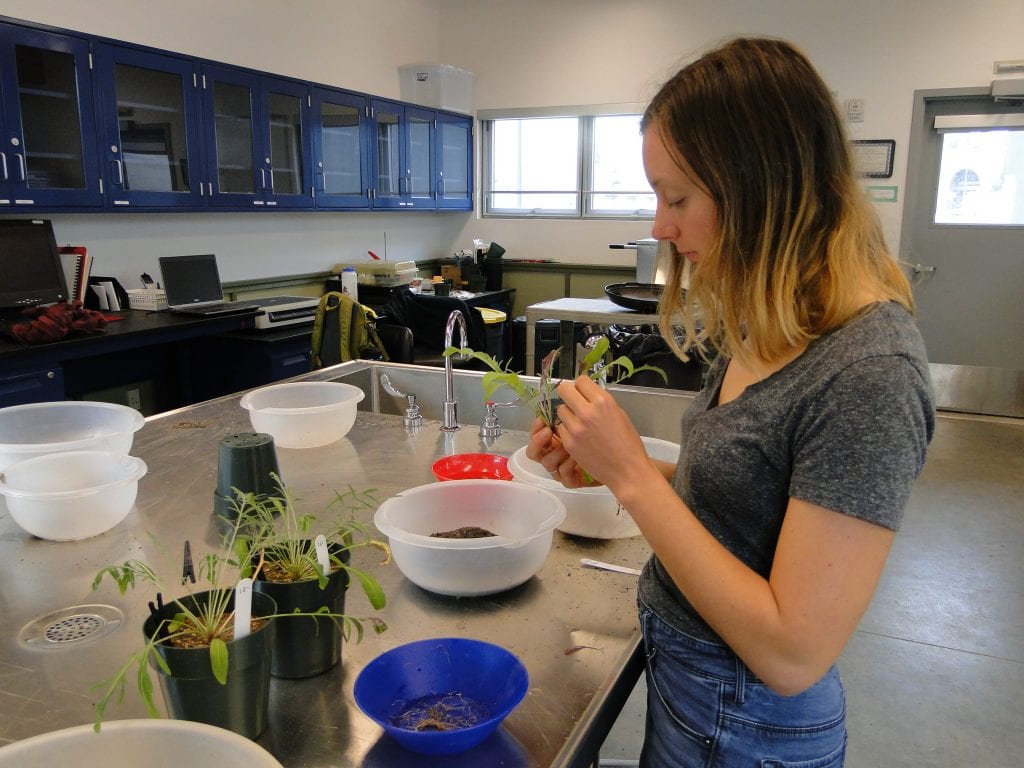
Regina and Roslyn’s collaborative project
In a greenhouse study, Regina and Roslyn grew knapweed with and without arbusuclar mycorrhizal fungi (AMF) under high and low light conditions. By measuring plant biomass, shoot to root ratios, leaf mass area (LMA), and AMF colonization, our project will determine if light intensity alters the effects of arbuscular mycorrhizal fungi (AMF) on growth of spotted knapweed (Centaurea stoebe). Light levels in greenhouses are typically much lower than levels in the field and light availability may significantly influence the effect of the symbiosis on plant growth. Their study shed light on this topic to better inform future experimental design.
- 2017 WWU RSP Undergraduate Research and Creative Activities ($475) Investigating growth response of knapweed to mycorrhizae under high and low light intensity.
Faythe Duran, MS Summer 2017
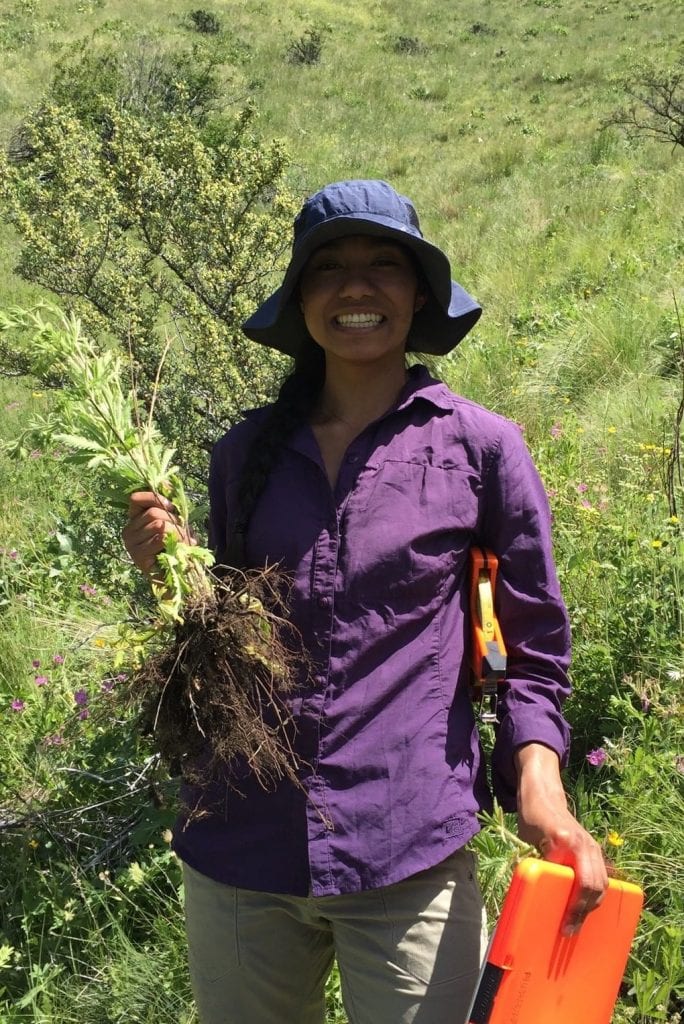
Faythe was a graduate student in the lab from 2015-2017. She worked on a project in collaboration with MPG Ranch in Western Montana to investigate how plant-soil interactions may (or may not!) affect the distribution of the invasive Eurasian forb, Potentilla recta. Her thesis was titled “Do conspecific soil microorganisms inhibit Potentilla recta?”
- 2017 Dean and Sandy Blinn Travel Research Fund ($480)
- 2016 Huxley Small Grant ($960) Do soil biota of a neighbor influence invasiveness of Potentilla recta?
- 2015 Pameric Educational Fund ($5000)
Kari Anna Clausen, BS Spring 2016
Kari Anna was a lab technician and undergraduate researcher from 2011-2016. She worked on many projects including presence and function mycorrhizal fungi in reservoir sediments following dam removal, arbuscular mycorrhizae in leaf litter, influence of moisture and mycorrhizae on competitiveness of knapweed, and evaluating potential connectivity of arbuscular and ecto-mycorrhizal fungal networks.
- 2014 WWU Scholar’s Week Outstanding Poster “Characterizing the soil environment of the Elwha basin and potential effects on plants”
Dylan Simpson, BS Spring 2016
Dylan was a lab technician and undergraduate researcher from 2015-2016. He worked on arbuscular mycorrhizae in leaf litter, and completed an undergraduate thesis titled “Colonization of leaf littler by arbuscular mycorrhizal fungi in temperate lowland forests of the Pacific Northwest.”
- 2016 WWU Scholar’s Week Outstanding Poster “Quantifying the colonization of leaf litter by arbuscular mycorrhizal fungi in temperate lowland forests”
- 2015 WWU RSP Undergraduate Research and Creativities Grant ($500) “Colonization of leaf littler by arbuscular mycorrhizal fungi in a temperate lowland”
Andrew Cortese, MS Spring 2014
Andy was a graduate student in the lab from 2011-2014. He worked on mycorrhizae in the Elwha basin and completed a thesis titled “Mycorrhizal availability in the basin of Lake Mills and influence on colonization and growth of Salix scouleriana under drought stress.”
- 2013 Charlton Family Endowment ($350) Supplemental funding for nutrient analysis of plant tissue2012 WWU RSP Enhancement of Graduate Research ($740) Mycorrhizal fungal abundance and infectivity in exposed sediments on the Elwha River
- 2012 Huxley Small Grant ($400) Benefits of arbuscular and ecto-mycorrhizae in drought tolerance of Salix scouleriana: A case stuidy of ecological restoration of the Elwha River in Olumpic National Park, Washington
Brandon Osterlund, BS Fall 2013
Brandon was undergraduate researcher in the lab from 2012-2013. He worked on arbuscular mycorrhizal fungi in leaf litter, and completed a research project; “Colonization of leaf littler by arbuscular mycorrhizal fungi: assessing its extent and functional significance in a Pacific Northwest ecosystem.”
Rebecca Gottlieb, BS Spring 2012
Becky was undergraduate research assistant in the lab from 2011-2012. She worked with mycorrhizal fungal isolates from Yellowstone National Park to determine if they were adapted to different levels of soil acidity.
Christopher Gallagher, BS Fall 2011
Chris was an undergraduate researcher in the lab in 2011 and spent the summer doing field work at MPG Ranch, Missoula, MT. He worked on mycorrhizal fungal and invasive plants and completed an undergraduate thesis titled “Do Invasive Plants Change Ecosystem Processes? A look into Centaurea stoebe’s participation in the mycorrhizal symbiosis across ecosystems and how Potentilla recta is altering native ecosystem processes in Montana.”